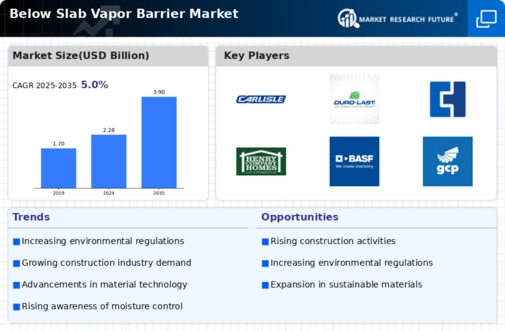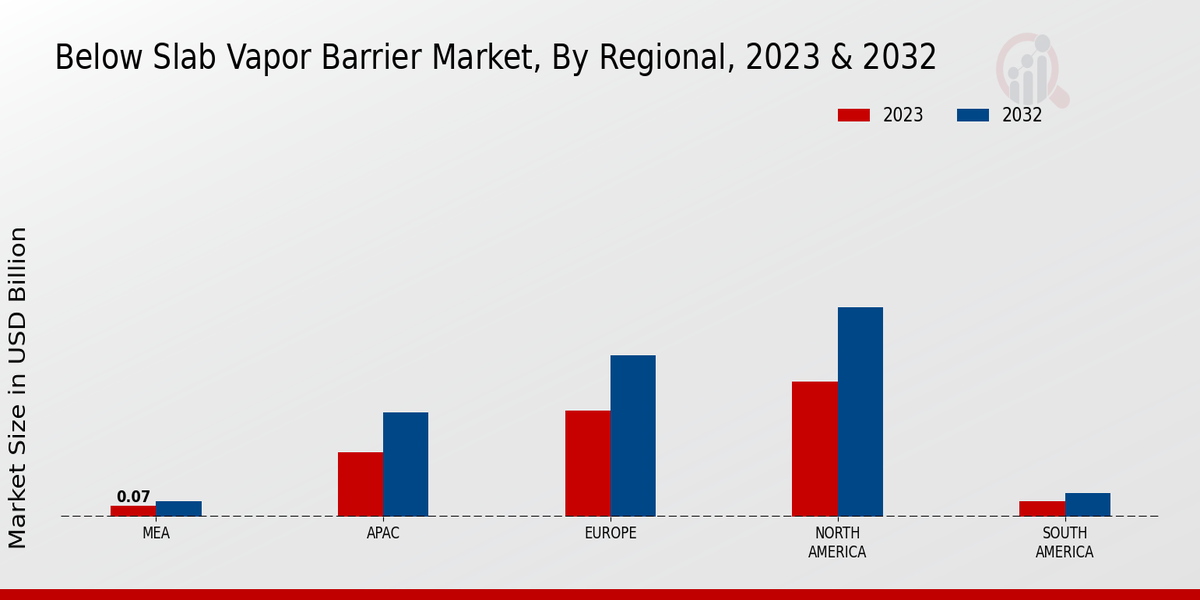Market Growth Projections
The Global Below Slab Vapor Barrier Market Industry is projected to experience substantial growth over the next decade. With an expected market value of 2.28 USD Billion in 2024, the industry is on track to reach approximately 3.9 USD Billion by 2035. This growth trajectory indicates a compound annual growth rate (CAGR) of 4.99% from 2025 to 2035. Such projections highlight the increasing importance of moisture control solutions in construction, driven by factors such as regulatory compliance, technological advancements, and a focus on energy efficiency.
Growth in Construction Activities
The robust growth in global construction activities serves as a significant driver for the Global Below Slab Vapor Barrier Market Industry. With urbanization and infrastructure development on the rise, the demand for effective moisture control solutions is expected to increase. This trend is particularly evident in emerging economies, where rapid urbanization is leading to a surge in residential and commercial construction projects. Consequently, the market is projected to expand at a CAGR of 4.99% from 2025 to 2035, reflecting the growing need for reliable vapor barriers to protect buildings from moisture intrusion.
Increased Focus on Energy Efficiency
The growing emphasis on energy efficiency in construction is a crucial driver for the Global Below Slab Vapor Barrier Market Industry. Vapor barriers play a vital role in reducing energy consumption by preventing moisture-related issues that can lead to increased heating and cooling demands. As energy costs rise and sustainability becomes a priority, builders are increasingly incorporating vapor barriers into their designs. This trend is expected to contribute to the market's growth, with projections indicating a rise to 3.9 USD Billion by 2035. The integration of vapor barriers aligns with global efforts to create more energy-efficient buildings.
Rising Awareness of Moisture Control
The increasing awareness regarding moisture control in construction is a pivotal driver for the Global Below Slab Vapor Barrier Market Industry. As builders and architects recognize the detrimental effects of moisture on structural integrity, the demand for effective vapor barriers is likely to rise. This heightened awareness is reflected in the projected market growth, with the industry expected to reach 2.28 USD Billion in 2024. The emphasis on moisture management not only enhances durability but also contributes to energy efficiency in buildings, thereby aligning with global sustainability goals.
Regulatory Standards and Building Codes
Stringent regulatory standards and building codes are shaping the Global Below Slab Vapor Barrier Market Industry. Governments worldwide are increasingly implementing regulations that mandate the use of vapor barriers in construction to prevent moisture-related issues. Compliance with these regulations is essential for builders, which drives the demand for high-quality vapor barrier products. As a result, the market is anticipated to grow, reaching an estimated 3.9 USD Billion by 2035. This regulatory landscape not only ensures safety and longevity in construction but also promotes the adoption of innovative materials and technologies.
Technological Advancements in Materials
Technological advancements in vapor barrier materials are influencing the Global Below Slab Vapor Barrier Market Industry positively. Innovations in polymer technology and manufacturing processes have led to the development of more effective and durable vapor barriers. These advancements not only enhance the performance of vapor barriers but also contribute to cost-effectiveness in construction. As builders seek to optimize material usage and improve energy efficiency, the adoption of these advanced materials is likely to increase, further driving market growth. The industry is poised for expansion as these technologies become more widely available.



















Leave a Comment